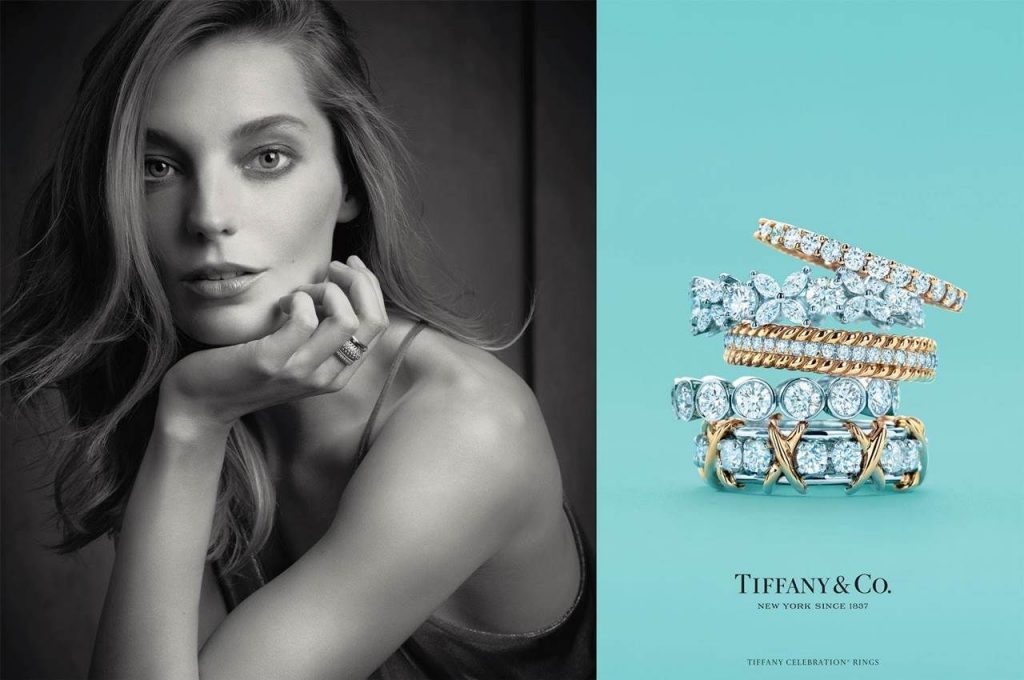When LVMH reported its first-half results on Monday, it revealed that Tiffany & Co. is faring well as the newest name under its ownership umbrella. The New York-based jewelry stalwart generated revenue of 1.9 billion euros ($2.25 billion), an increase from pre-pandemic levels in 2019, and saw a boost in margins and profits, as well. In other words, “Tiffany appears to be off to a good start,” Reuters’ Lisa Jucca asserted on Tuesday, noting that Tiffany’s success makes LVMH chairman and CEO Bernard Arnault’s quest to fight the original terms of his deal to acquire the famed jewelry company “look all the more contrived,” while also serving as “a reminder of his financial ruthlessness when pursuing targets.”
Tiffany & Co.’s latest results follow from a strong third quarter for the brand that spoke “volumes about the enduring strength of the Tiffany brand,” former Chief Executive Officer Alessandro Bogliolo said in a statement at the time, and Q4 revenues that grew by 3 percent on a year-over-year basis, raising questions (for me at least) about the merit of the arguments behind LVMH’s attempt to pull out of its $16 billion-plus deal to acquire Tiffany & Co., namely, its arguments that the jewelry company’s management and its Board of Directors mishandled the company in the midst of the COVID-19 pandemic and that Tiffany’s business was thoroughly “devastated” as a result.
LVMH’s September 2020 attempt to back out of the $16.2 billion deal that it reached with Tiffany in November 2019 swiftly prompted Tiffany to file suit, with the jeweler seeking an order from a Delaware Chancery Court judge requiring LVMH to “abide by its contractual obligation under the merger agreement to complete the transaction on the agreed terms.” LVMH responded by threatening – and then filing – litigation of its own on the grounds that its board “had the opportunity to examine the current economic situation of Tiffany and its management of the crisis,” and found that “the first half results and its perspectives for 2020 are very disappointing, and significantly inferior to those of comparable LVMH Group [brands] during this period.”
The Arnault-run conglomerate further asserted that Tiffany had failed to “follow an ordinary course of business, notably in distributing substantial dividends when the company was loss making,” while also claiming that “the operation and organization of [Tiffany] are not substantially intact,” thereby, invoking the Material Adverse Effect (“MAE”) clause in the parties’ merger agreement, which they signed-off on in November 2019, ahead of the onset of COVID.
In the complaint that it did eventually file (and then ultimately settle), LVMH argued, among other things, that Tiffany “hemorrhaged cash for the first time in a quarter century, with no end to its problems in sight,” and asserted that “Tiffany’s performance will continue to be poor,” at least in part because its “retail strategy” is “particularly ill-suited for the challenges ahead” and will “have a significant long-term detrimental impact on the company.” With that in mind, and given “the decision by two sophisticated parties, represented by sophisticated advisers, to omit a pandemic carve,” LVMH stated the pandemic has, in fact, “caused an MAE that allows LVMH to terminate.”
From the outset, Tiffany characterized LVMH’s MAE allegations as lacking in “factual, contractual or legal support,” and argued that “nothing alleged by LVMH has come close to meeting the MAE definition in the merger agreement, which excludes all ‘changes or conditions generally affecting the industries in which [Tiffany] operate[s]’ and ‘general economic or political conditions.’”
While LVMH did, in fact, get Tiffany & Co. for a lower price than the parties initially agreed to ($131.50 per share instead of the original $135 per share), the settlement was not entirely one-sided. A close read suggests that the renegotiated price was not necessarily the result of MAE-esque financial turmoil on the part of Tiffany that made it an outlier compared to other industry players in the wake of COVID. In reality, it was a trade off, with Tiffany getting “real value” in exchange for that 2 percent, Brian JM Quinn, a professor at Boston College Law School, told TFL at the time. “The deal that Tiffany got for giving up 2 percent basically included no walkaway rights for LVMH.” Tiffany’s executives “basically said, ‘Sure, we will give you 2 percent off, but if we have to go back to the Chancery Court to try to enforce this deal, the price that will be used by the court for determining damages is not $131.50 but $135, the original price.”
Put another way, if the deal did not get done, Tiffany would, nonetheless, have gotten “full price” for it.
An underreported term that was added to the amended merger agreement, set this out, stating that “in the event that [Tiffany] brings any claim, litigation, or other similar proceeding to enforce the terms of the amended merger agreement or for money damages, the ‘Per Share Merger Consideration’ will be deemed, for all purposes in such proceeding, including any award of specific performance or damages, to be $135.00 in cash … as was in the original merger agreement.”
Beyond that, Tiffany also benefitted from the removal of two conditions that were previously included in the original merger agreement: one that conditions the closing of the deal on “the absence of a law or order in effect that enjoins, prevents or otherwise prohibits the consummation of the merger issued by a governmental entity,” such as if the French government had sent LVMH another letter formally requesting that it delay the deal, and another that mandated that the deal could not close if there is a material adverse effect in play.
As the amended merger agreement removed those “conditions to the consummation of the merger,” thereby, giving LVMH far less room to potentially wriggle out of the deal.
These new terms were hardly unimportant, according to Quinn, who said that they took away “all the conditionality” and gave Tiffany “a lot of certainty” in connection with the newly-fashioned deal, which is valuable in dealmaking, especially given the history between the parties to this transaction. At the same time, the language of the amended merger gave Tiffany “the ability to jam Arnault if [he] tries to go back” on the deal for a second time.
While such terms never came into play, Jucca notes that the clash paired with the recently-released Tiffany results, nonetheless, mean that any other luxury brands that end up on the opposite side of a deal with Arnault and his luxury goods empire in furtherance of the larger consolidation trend “will be all the more determined to make sure he pays up.”
In its release on Monday, LVMH touted the “successful integration of Tiffany,” which it says “has performed extremely well since its acquisition.” The brand is currently in the midst of a major marketing overhaul under the watch of product and communications EVP Alexandre Arnault, as well as a new focus on “its iconic products.” LVMH revealed on Monday that “Tiffany will aim to maintain the pace of its growth in the second half of the year,” drawing in particular on “an acceleration in China, and the launch of a new collection of gold jewelry, premiering in the U.S.”











